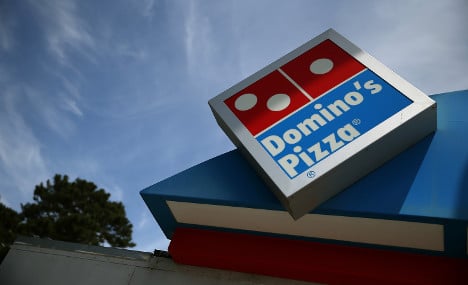When Alessandro Lazzaroni touted the idea of bringing the American pizza chain to Italy, he was unsurprisingly met with skepticism from his fellow Italians, with some joking that it would be akin to “trying to sell ice to the Eskimos”.
Never since McDonald’s erected its first golden arches in Bolzano in 1985, has anyone attempted such a courageous culinary move.
Needless to say, more than a few eyebrows were raised when the company that tops pizza with pineapple opened its first shop in Milan earlier this month, with three more to follow by the end of the year.
“Bringing Domino’s to Italy is definitely a challenge,” Lazzaroni told The Local.
“The Italians are picky about food, they’re the inventors of pizza – one of their most-loved foods. It’s what people share on festive occasions, with family and friends, perhaps ahead of a football match…”
But Lazzaroni, who once ran a McDonald’s franchise in Italy, could be the right man to tempt Italian taste buds.
He insists that the aim is to bring together “two excellences”: the traditional Italian pizza with a globally successful model of food delivery.
“We will be using a recipe created by us, using locally-sourced wheat,” Lazzaroni said.
“It will be purely Italian in all other respects too…the tomato sauce, mozzarella, gorgonzola and Parma ham.”
So does this mean the pineapple-topped Hawaiin is off the menu?
Believe it or not, some of his curious customers have already suggested adding “American tastes” to the menu, dispelling a myth that Italians find it hard to break from culinary tradition.
“Italians love to eat well, but they are not locked in their traditions, rather they are curious to try new things,” Lazzaroni added.
Taste aside, it's the company's home delivery model which could be the key to cracking the Italian market.
While there are thousands of “pizza slice” takeaways across Italy, and you can call your local pizzeria and order a pizza (so long as you go along and pick it up), very few places will deliver to your door.
“There aren’t any pizzerias that offer, like Domino’s does, the possibility to order and pay online, to pay with either cash or a debit or credit card, and to keep track of your order,” Lazzaroni added.
“Our commitment is to provide the best service possible – straightforward ordering and a hot pizza delivered to your home on time.”
That service seems to be paying off so far, with the shop in Milan receiving “a large amount of orders” since opening.
“People have appreciated the quality of our pizza, as well as the convenience and timeliness of the service.”
No doubt the American coffee chain, Starbucks, which is rumoured to be coming to Italy, will be watching Domino's progress closely.
Read more: Starbucks rumours get Italians in a froth
Interview by Ellie Bennett




 Please whitelist us to continue reading.
Please whitelist us to continue reading.
Member comments